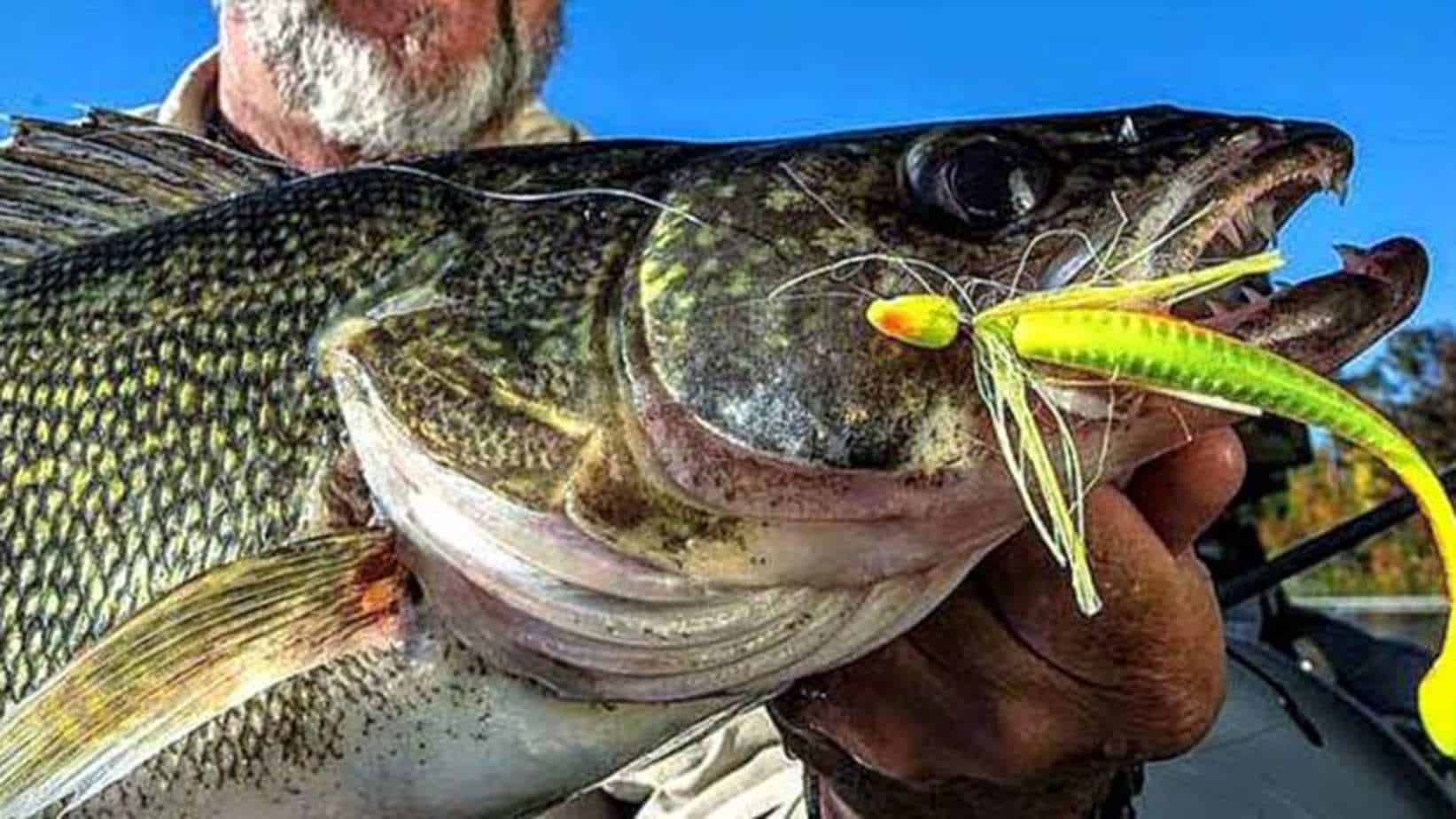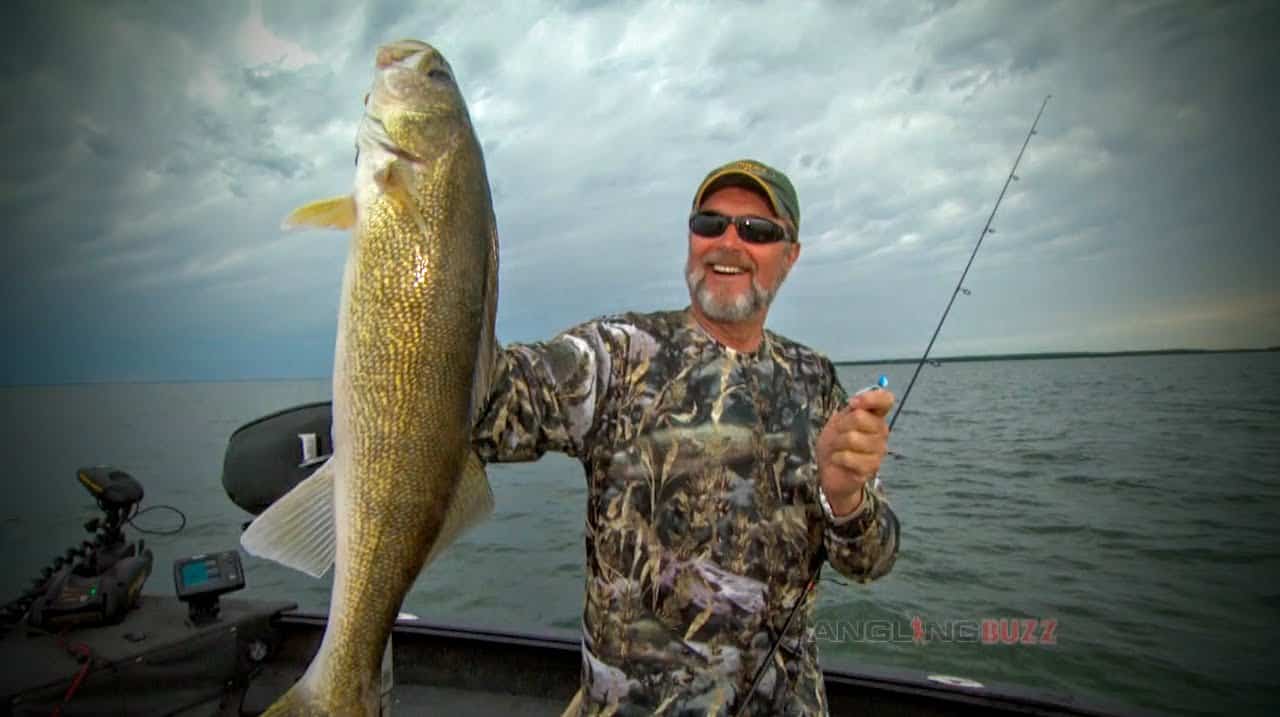There are some spring fishing spots that are productive for a number of fish species (walleye, bass, muskies, etc.) throughout the early season.
During this period, there are a lot of fish that hang out in the shallow rocks, and they will stay there for a long time. You can grab an underwater camera, drop it down, and you’ll be amazed at the numbers of walleye you’ll find swimming around in 3-6 feet during the spring. Conversely, there will be groups of fish in deeper water during this exact some time window.
It’s not uncommon for these fish to have different feeding windows. The shallow water fish will quit biting, and the deepwater bite will start to pick up steam. The reverse can happen as well.
Most of these fish don’t travel between these deepwater and shallow water feeding areas throughout the day. Chances are, if the bite stops or slows down up in the shallow rocks, it’s not because the fish vacated their shallow haunts for deeper water. The walleyes are still there, it’s just a matter of waiting for their next “bite window” to open up.
Sometimes low-light periods or nighttime is when these shallow fish fire-up. Pulling Rapalas over shallow structure after-hours is an excellent way to fill the boat with walleye during the spring months. Sometimes cloud cover and some wind is all you need to get things going during the daytime hours. Just like anything in fishing, conditions and bites will change from hour-to-hour. Fish react to local weather and water conditions. It’s up to you reach to the fish!

Some days, changing up your presentation can make all the difference. Hair jigs are absolute walleye catchers during springtime months. Most folks typically tip their jigs with minnows, but don’t sleep on plastics this time of year. Using a paddle tail minnow trailer will actually slow your drop-speed vs. a straight tail minnow or plastic. That can be the ticket when fish want the lure snapped a little bit slower. Both tactics will work, but the fish might have a preference on any given day.
One thing you’ll notice if you send enough time on the water is that good spots are good spots. In other word, some spring fishing spots will hold perch, walleye, bass and muskies all at different times throughout the year.
In the video above, Al Lindner and James Lindner are catching walleye one-after-the-other on a shallow rock reef. Two or three weeks later, those same walleye will likely start pushing out into deeper water as the temperatures continue to climb as they begin to approach summer.
That same reef system will hold 25+ pound musky, setting up perfectly for a shallow water topwater and bucktail bite.
Fish are constantly on the move this time of year and some of your favorite spring fishing spots are probably popular intersection points for numerous fish species. Every fish in your favorite lake is constantly reacting, changing, and moving around based on weather conditions, water temperatures and the location of their preferred forage.
What does this mean?
It means one of the biggest keys to catching fish is you willingness to move around and follow the fish and as they shift in and out of different spring fishing spots. You’ll find that different species of fish are more active in certain locations during specific conditions. Understanding these “peak periods” can help you catch more walleye, bass, pike, musky, you name it, throughout the course of the day.
Fish are typically in a neutral feeding mood throughout most of the season. Bad weather fronts and heavy fishing pressure can take those neutral fish and make them negative. That can sometimes be the difference in whether or not a fish is “catchable”. Positive conditions that result in a “peak period” will take that population of neutral fish and turn them into positive fish.
In other words, peak periods are when the environmental conditions are right for a good portion of the population of catchable fish to start actively feeding. When this happens, the bite can be lights-out!









